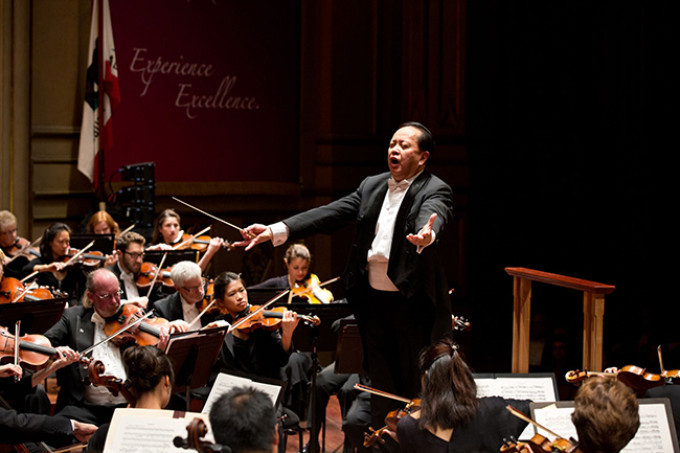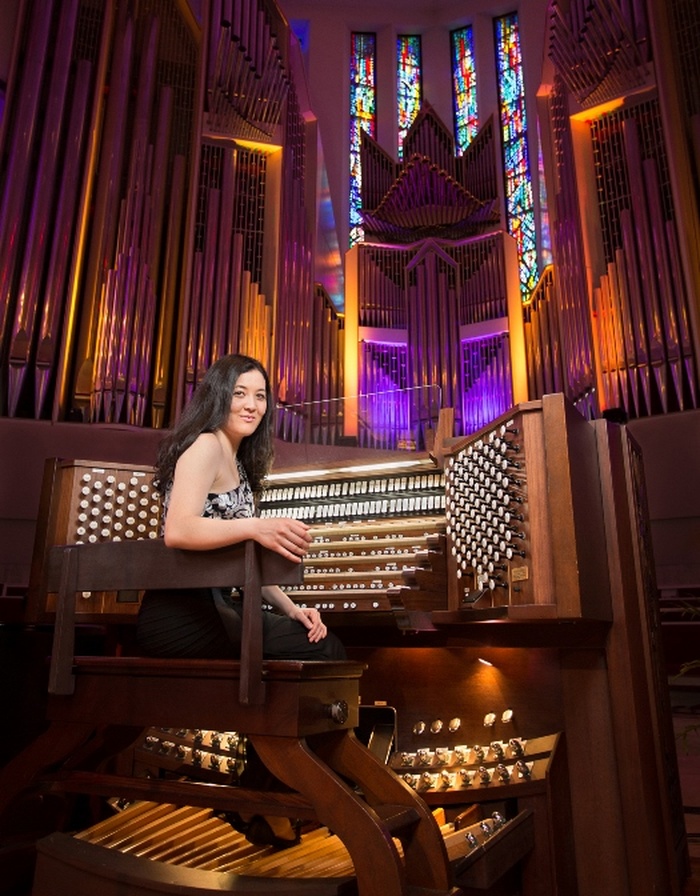Review: THE SAN DIEGO SYMPHONY ORCHESTRA at The Jacobs Music Center

Jahja Ling was the San Diego Symphony Orchestra's conductor and music director for 13 years. During that time he was responsible for hiring the 70 new musicians who participated in a huge leap upward in the orchestra's precision and sound. Now the SDSO's Conductor Laureate, he has returned to appreciative warm applause in each of the two seasons since he retired as permanent conductor. For his second appearance this year he chose an all-French program: the Overture to Benvenuto Cellini by Hector Berlioz, Francis Poulenc's Concerto for Organ, Timpani and Strings, and the third symphony of Camille Saint-Saëns, his "Organ Symphony." The guest organist was the talented Chelsea Chen.
The Overture to Benvenuto Cellini remains in the concert repertoire though the opera itself was a failure at its 1838 premiere and is seldom performed today. Cellini was a colorful, adventurous man of many talents from soldier to artist, and the overture is an appropriately colorful musical portrait of him by an adventurous composer and orchestrator. It opens with an explosion of sound that soon turns to a romantic melody for strings, played with warmth and lush beauty under Ling's baton. The pace repeatedly calms and quickens until a climb to one of those full orchestra crescendos with impressive brass, crashing symbols and pounding timpani that Ling does so well.
A glorious noise, but one exceeded in volume by the powerful foundation-shaking opening chord of Poulenc's Concerto for Organ, Timpani and Strings, a sound which brings to mind Bach's famous Toccata and Fugue in D Minor. Poulenc considered the concerto one of his religious works, and its orchestration excludes winds and brass so that it can be more readily performed in a church. (That's only a small part of the story behind the concerto's composition. The piece was written for Princess Edmond de Polignac, a fascinating woman who was heir to the Singer sewing machine fortune and an extraordinary patron of the arts. It's worth a bit of googling.)
Overall Chen's performance was impressively commanding, so much so that the

violins were nearly inaudible at times in louder passages. The hair-raising opening is succeeded by a melody of mysterious, contemplative beauty. The organ is joined first by quietly rumbling tympani, and then strings. The faster second section of seven introduces an important and exciting rapidly rising theme which appears again in other sections. It was less legato than usual in Chen's interpretation, each note stressed perhaps to call more attention to the memorable motif. I believe it is more effective as played in most other performances and recordings.
But the concerto delighted the audience, me as well, and curtain calls brought Chen back for what proved to be a surprising encore-an arrangement of the best known melodies from John Williams' Star Wars scores. Clever and well played, it brought an even more enthusiastic ovation, one that matched the response I get from young students in a classroom when I play a recording of the original version to introduce them to the sound of a symphony orchestra. Even adult classical-music fans thrill as the Jedi prevail over Darth Vader and the evil Empire!
More fireworks followed after intermission when Ling led an excellent performance of Saint-Saëns Organ Symphony. Despite the nickname, the organ, physically and viscerally front and center in Poulenc's concerto, was partway back and to the side in a largely supporting role for the symphony. It doesn't even appear until it quietly accompanies a warm touching theme in the strings in the second of the work's four parts.
The organ roars unleashed at last to add power and excitement to the symphony's closing section in which the composer reprises and transforms the main themes of preceding sections in a thunderously majestic final statement. The finale brought listeners to their feet to show Maestro Ling how much they enjoyed the concert and how much they appreciated his role in the revitalization of the San Diego Symphony Orchestra.
Photos compliments of San Diego Symphony.
Reader Reviews
Videos

